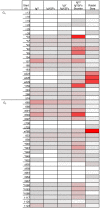Antiviral Biologic Produced in DNA Vaccine/Goose Platform Protects Hamsters Against Hantavirus Pulmonary Syndrome When Administered Post-exposure
- PMID: 26046641
- PMCID: PMC4457835
- DOI: 10.1371/journal.pntd.0003803
Antiviral Biologic Produced in DNA Vaccine/Goose Platform Protects Hamsters Against Hantavirus Pulmonary Syndrome When Administered Post-exposure
Abstract
Andes virus (ANDV) and ANDV-like viruses are responsible for most hantavirus pulmonary syndrome (HPS) cases in South America. Recent studies in Chile indicate that passive transfer of convalescent human plasma shows promise as a possible treatment for HPS. Unfortunately, availability of convalescent plasma from survivors of this lethal disease is very limited. We are interested in exploring the concept of using DNA vaccine technology to produce antiviral biologics, including polyclonal neutralizing antibodies for use in humans. Geese produce IgY and an alternatively spliced form, IgYΔFc, that can be purified at high concentrations from egg yolks. IgY lacks the properties of mammalian Fc that make antibodies produced in horses, sheep, and rabbits reactogenic in humans. Geese were vaccinated with an ANDV DNA vaccine encoding the virus envelope glycoproteins. All geese developed high-titer neutralizing antibodies after the second vaccination, and maintained high-levels of neutralizing antibodies as measured by a pseudovirion neutralization assay (PsVNA) for over 1 year. A booster vaccination resulted in extraordinarily high levels of neutralizing antibodies (i.e., PsVNA80 titers >100,000). Analysis of IgY and IgYΔFc by epitope mapping show these antibodies to be highly reactive to specific amino acid sequences of ANDV envelope glycoproteins. We examined the protective efficacy of the goose-derived antibody in the hamster model of lethal HPS. α-ANDV immune sera, or IgY/IgYΔFc purified from eggs, were passively transferred to hamsters subcutaneously starting 5 days after an IM challenge with ANDV (25 LD50). Both immune sera, and egg-derived purified IgY/IgYΔFc, protected 8 of 8 and 7 of 8 hamsters, respectively. In contrast, all hamsters receiving IgY/IgYΔFc purified from normal geese (n=8), or no-treatment (n=8), developed lethal HPS. These findings demonstrate that the DNA vaccine/goose platform can be used to produce a candidate antiviral biological product capable of preventing a lethal disease when administered post-exposure.
Conflict of interest statement
JB is affiliated with, has an ownership interest in, Aldevron. JS is affiliated with, and has ownership interest in, Avianax. JWH has patent application involving the Andes virus DNA vaccine plasmid used in study. MR is currently affiliated with Cedar Industries, Inc but was CSO of PharmaJet Inc when this work was performed. This does not alter our adherence to all PLOS policies on sharing data and materials.
Figures






References
-
- Schmaljohn C, Nichol ST (2006) Bunyaviridae In: Knipe DM, Howley PM, editors. Fields Virology. Philadelphia: Lippincott, Williams, and Wilkins; pp. 1741–1789.
-
- Lopez N, Padula P, Rossi C, Lazaro ME, Franze-Fernandez MT (1996) Genetic identification of a new hantavirus causing severe pulmonary syndrome in Argentina. Virology 220: 223–226. - PubMed
Publication types
MeSH terms
Substances
LinkOut - more resources
Full Text Sources
Other Literature Sources
Medical

